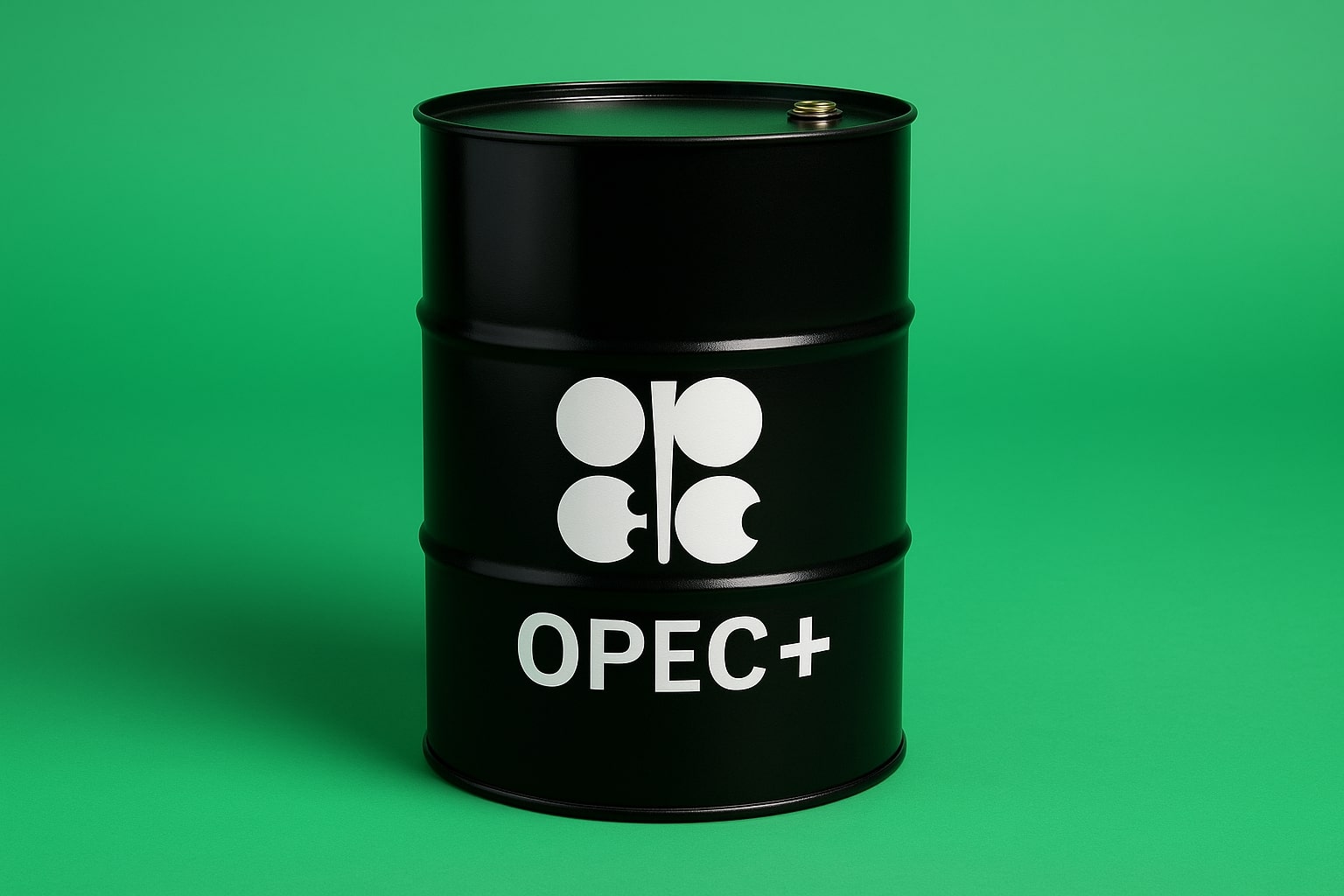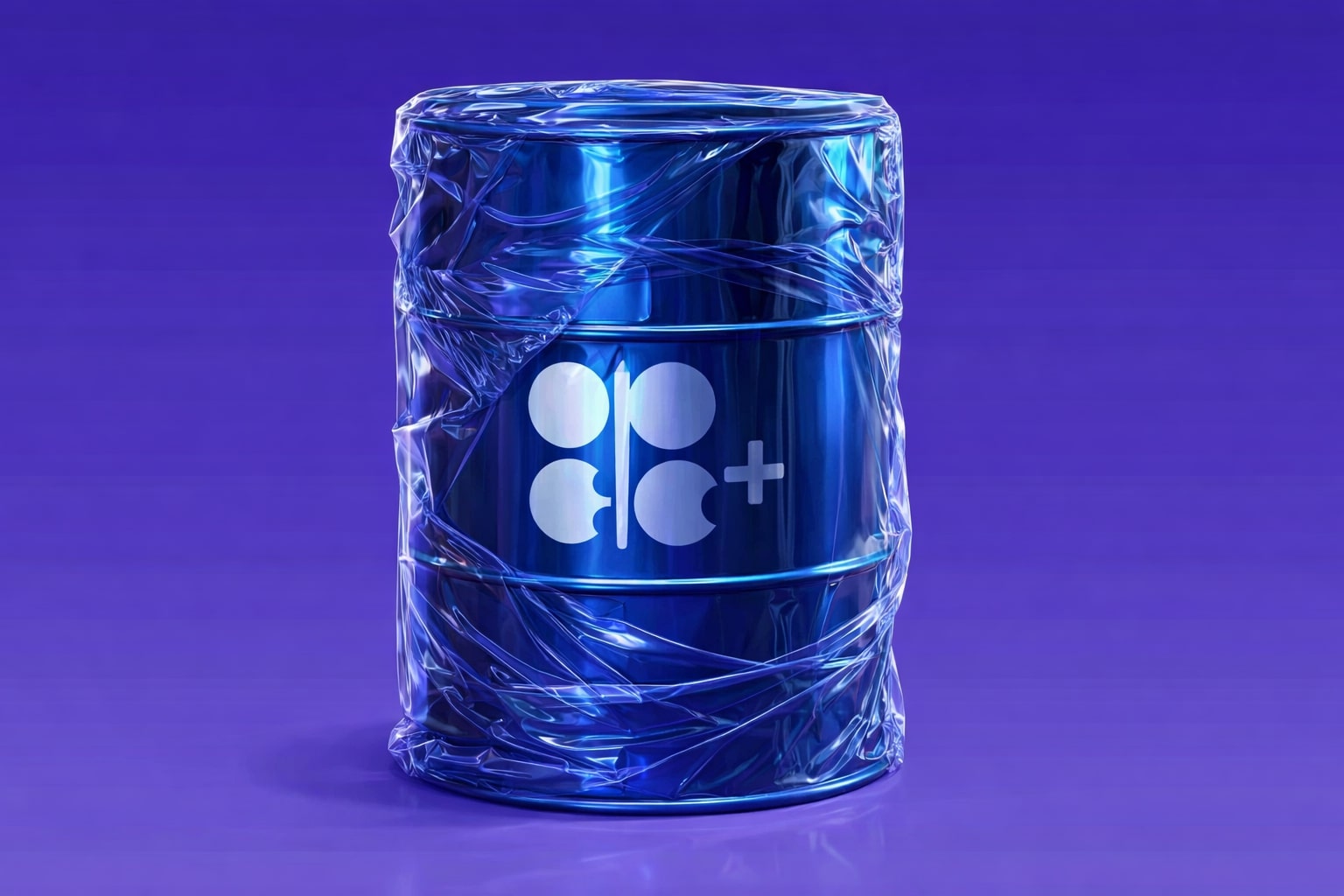
Crude Oil (CL=F) Rebounds to $67.55 as Supply Fears, Geopolitical Risk, and Tight Inventories Collide
WTI tests major resistance after bullish reversal as low U.S. stockpiles, OPEC doubt, and Middle East instability converge | That's TradingNEWS
Crude Oil (CL=F) Rebounds to $67.55 as Supply Fears, Geopolitical Risk, and Tight Inventories Collide
WTI crude oil (CL=F) surged to an intraday high of $67.55, recovering sharply from earlier technical breakdowns and a week marked by heightened geopolitical instability and low U.S. inventories. The rebound was sparked by a bullish hammer candlestick formation on Wednesday near the 50-day moving average at $65.63—a key level that coincided with AVWAP support from the April low. That zone, previously seen as a breakdown point, has now flipped into a critical testing ground for upside momentum. Volume accelerated into the move, with Thursday’s high aligning with both trend support and short-term resistance. Technical confirmation is building as price closes near the daily high, validating the reversal.
Bullish Technical Breakout Faces Key Resistance Cluster at $68–$68.67
WTI's rally is now colliding with a dense confluence of resistance levels. The 20-day moving average stands at $67.69, overlapping the lower trendline of the former bear flag formation. This zone had capped price action for the past two weeks. A successful breakout above $68.67—the current 200-day moving average—would mark the first close above that level since mid-June, reinforcing bullish sentiment and triggering trend-following inflows. Until then, the upside remains technically challenged, with momentum traders awaiting a clear breach above the confluence.
U.S. Inventories Drop 3.9 Million Barrels, Tightening Summer Market Conditions
Fundamentally, the rally was reinforced by the U.S. Energy Information Administration (EIA) reporting a 3.9 million barrel draw in commercial crude inventories for the week ending July 11. Total stockpiles now sit at 422.2 million barrels, 8% below the five-year average. This drawdown aligns with seasonal demand peaks and refiner activity. The International Energy Agency (IEA) recently confirmed that current market indicators reflect much tighter physical oil conditions than previous balances implied. Prompt time spreads remain in steep backwardation, a classic signal of near-term supply tightness, while refining margins stay elevated. This combination supports higher spot pricing even as economic growth outlooks remain uncertain.
Middle East Drone Strikes and Israeli-Syria Tensions Add to Supply Concerns
Geopolitical friction intensified with drone strikes targeting oilfields in Kurdistan, temporarily shutting in up to 200,000 barrels per day. Meanwhile, renewed Israeli airstrikes into Syrian territory have added another layer of market anxiety, further inflaming fears of broader regional conflict. These developments compound risks to global supply, particularly for Brent-linked contracts (BZ=F), which rose to $69.52, up 1.46% on the day. The resurgence in conflict underscores oil’s premium to risk and reintroduces speculative flows into the energy complex.
OPEC+ Spare Capacity Narrative Under Scrutiny—StanChart Sees $15 Upside Risk
A fresh round of skepticism surrounds the commonly cited OPEC+ spare capacity estimates. At the 9th OPEC International Seminar, energy executives and analysts diverged sharply on just how much production flexibility exists. While Wall Street consensus assumes 5–6 million barrels/day in spare supply, Standard Chartered argues the real number is far smaller and geographically limited. They note that this misconception has materially suppressed the forward curve. Their bullish 2026 outlook includes a scenario where prices move $15/barrel higher than consensus due to this hidden constraint. This view aligns with Goldman's recent upgrade of its Brent forecast to $66/bbl for H2 2025, citing both supply-side shocks and OECD inventory depletion.
India Oil Demand Stays Resilient Despite Shrinking Russian Discounts and U.S. Pressure
Despite pressure from U.S. sanctions threats, India remains firmly committed to sourcing discounted Russian crude. Trump’s vow to impose secondary tariffs has not deterred Indian refiners, who continue to secure advantageous barrels. However, Russian discount margins have shrunk, making Indian importers more sensitive to logistics and quality differentials. Indian state oil firms are also revisiting refining strategies amid the potential of stricter U.S. enforcement and shifting flows. On the natural gas side, India’s GAIL is in early-stage talks to secure long-term supplies from Alaska LNG, while ONGC is evaluating investment in a new domestic refinery, reflecting a broader drive to secure strategic energy inputs.
Brazil’s Petrobras Mulls Retail Fuel Reentry as Latin American Margins Squeeze
Petrobras (NYSE:PBR) is reportedly exploring a return to Brazil’s retail fuel market, a move aimed at restoring downstream pricing power amid rising domestic political pressure. Latin American producers are increasingly vulnerable to global margin compression, FX volatility, and local regulatory burdens. Petrobras’s strategy reflects broader emerging market oil dynamics—where government interference often distorts market function but presents upside if deregulation is achieved. Meanwhile, Chevron (NYSE:CVX) has adopted a more conservative stance, prioritizing cash flow in the Permian over production growth, signaling a shift in U.S. shale strategy amidst a higher-cost environment.
Shale Momentum Slows, U.S. Output Faces Structural Growth Ceiling
Goldman Sachs recently declared that the “boom years” of U.S. oil output growth are likely behind us, as rig counts stall and capital efficiency plateaus. Shale’s breakeven sensitivity to oil prices is rising, particularly as OFS costs climb. This matches recent commentary from E&P operators in the Eagle Ford and Bakken, where capex guidance has been trimmed for 2H 2025. The Mars US grade fell 1.41% to $71.88 as Gulf Coast throughput slumped on feedstock reallocation. With the marginal barrel becoming more expensive to produce, any incremental supply shock may hit a tighter system than markets currently price in.
Backwardation Deepens as Prompt Supply Falls Short of Demand
Time spreads across both WTI and Brent futures curves are widening, reflecting tighter spot market conditions even as macro sentiment remains fragile. With prompt barrels commanding a premium, traders are increasingly focused on storage plays and short-cycle delivery arbitrage. This tightening structure reinforces that the physical market is not nearly as oversupplied as futures suggest. Gasoline prices remained steady at $2.171/gal, while Louisiana Light fell 2.13% to $70.89, reflecting localized supply softness in the Gulf Coast region. Meanwhile, the Bonny Light blend dropped 2.84% to $78.62 as Nigerian exports were interrupted by operational halts and renewed OPEC quota debates.
Natural Gas Price Outlook Bullish Amid EU Sanction Risk and Summer Heat
Natural gas (NG=F) traded at $3.528, down 0.40%, but forward fundamentals remain supportive. EU storage sits at 73.1 bcm, but injection rates are slowing while heatwaves sweep the continent. Standard Chartered warns that Washington’s bipartisan push for extreme sanctions on Russian gas—up to 500% tariffs—could create a structural dislocation in European supply chains. U.S. LNG capacity, particularly from Venture Global and Plaquemines, is being repriced higher as potential spot surges loom. If Russian gas volumes—averaging 79.8 mcm/day—are curtailed, spot LNG prices in Europe could spike, lifting U.S. benchmark prices significantly.
Verdict: BUY – Tight Physical Market, Geopolitical Risks, and Mispriced Spare Capacity Signal Upside
Despite recent volatility and technical fragility, the oil market’s structural setup points toward higher prices. The combination of tight U.S. inventories, geopolitical flashpoints, overestimated spare capacity, and resilient demand in key import markets like India builds a bullish case for CL=F and BZ=F. Technicals are aligned with a potential breakout above $68.67, which could accelerate momentum toward the $72–$74 range. On the natural gas front, underpriced sanction risks add further upside optionality. We rate crude oil a BUY, with short-term resistance at $68.67 and medium-term targets near $74.
That's TradingNEWS
Read More
-
UCO ETF Price Forecast: Can NYSEARCA:UCO at $18.57 Ride a 2026 Oil Squeeze?
18.12.2025 · TradingNEWS ArchiveStocks
-
XRPI at $10.50 and XRPR at $14.93 Hit XRP ETF Lows While XRP-USD Holds $1.84 After 30 Days of Inflows
18.12.2025 · TradingNEWS ArchiveCrypto
-
Natural Gas Price Forecast: Henry Hub Holds Around $4 as EIA Draw Hits 167 Bcf
18.12.2025 · TradingNEWS ArchiveCommodities
-
USD/JPY Price Forecast: Pair Holds Above 155 As BoJ And US CPI Set Up A Major Break
18.12.2025 · TradingNEWS ArchiveForex



















